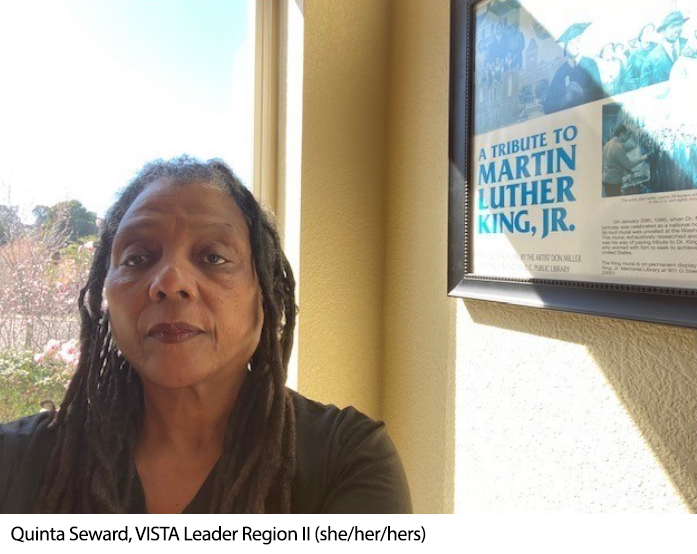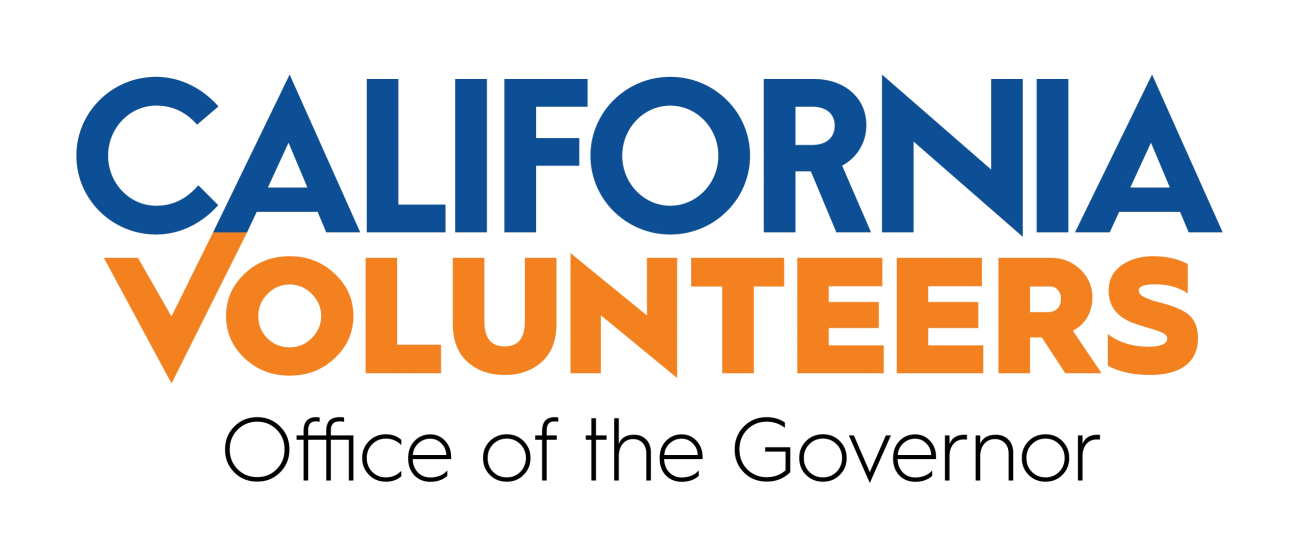Honoring Black History Month: Highlighting our Black Service Members
February 2021
To honor Black History Month at California Volunteers, we wanted to hear from service leaders on what it meant to be Black and of service to the community. The State of California continues to strive for equity in volunteer service programs both in who we serve, and our service members. We heard from Quinta Seward on her thoughts on being Black and a service member.
 What does it mean to you to be a service member?
What does it mean to you to be a service member?
I grew up in the Civil Rights/Black Liberation era of the sixties and seventies. I benefitted from the commitment and passion of those before me who resisted notions of inferiority, fought against, inequitable separate but equal policies and put their lives on the line to ensure basic human rights for all people, despite race, class, gender, and sexual orientation. The baton continues to be passed from one generation to the next – as we still find ourselves confronting and fighting systemic inequities. Although “service,” alone will not right the wrongs many of us have endured, it is part of a long trajectory of –lifting the voices of marginalized people, giving back, and improving the plight of the human condition. It is out of this context that I serve.
What does it mean to you to be Black and a VISTA Leader?
Representation is very important – and by that, I mean showing up for those that look like me, with whom I share a similar background, honoring my ancestors and putting one’s best foot forward. However, being Black and a VISTA Leader, goes beyond mere representation. As a single presence or one of few, being Black might go unnoticed – a check in the box for diversity. Beneath the surface though, being one of a few belies, the economic and racial hierarchy of those who are able to serve. Not everybody can afford to live off the meagre stipends afforded to VISTA Members. At the same time, serving in a VISTA program can lead to an educational award and receiving non-competitive eligibility status for Federal jobs upon successful completion of a year of service. The lack of diversity in AmeriCorps VISTA programs unfortunately is mirrored in the lack of diversity in the work force and reduces the opportunity for higher educational support to the status quo. My very existence as a Black VISTA Leader and former Peace Corps Volunteer, speaks to these contradictions. At the same time, I do represent what is possible and I am proud to represent in the best way I can, the need for diversity and equity.
How can we make service and volunteerism more accessible to the Black community?
First, the opportunity to even speak about what it might be like to be a Black VISTA Leader should extend beyond Black History Month. Black History is an integral part of American History and everyone should have an opportunity to learn and reflect on this history. Secondly, the notion of service is not limited to the traditional, top down, “savior’s” mentality often embraced by those who serve. Service is an integral part of the Black experience. I grew up in an extended Black community – where neighbors looked out for each other, and shared resources. Efforts should be made to expand notions of service, conduct outreach to understand the different ways service is applied culturally in the Black Community through formal and informal methods including through the Black Church, Historically Black colleges, fraternities and sororities, Black professional associations, Black business associations, labor unions, LGBTI groups, youth and senior groups and other cultural institutions. Lastly, we should all advocate for bigger public service stipends to attract a wider net of potential volunteers. Lastly, the importance and need for diversity training and of anti-racism work cannot go unmentioned.

